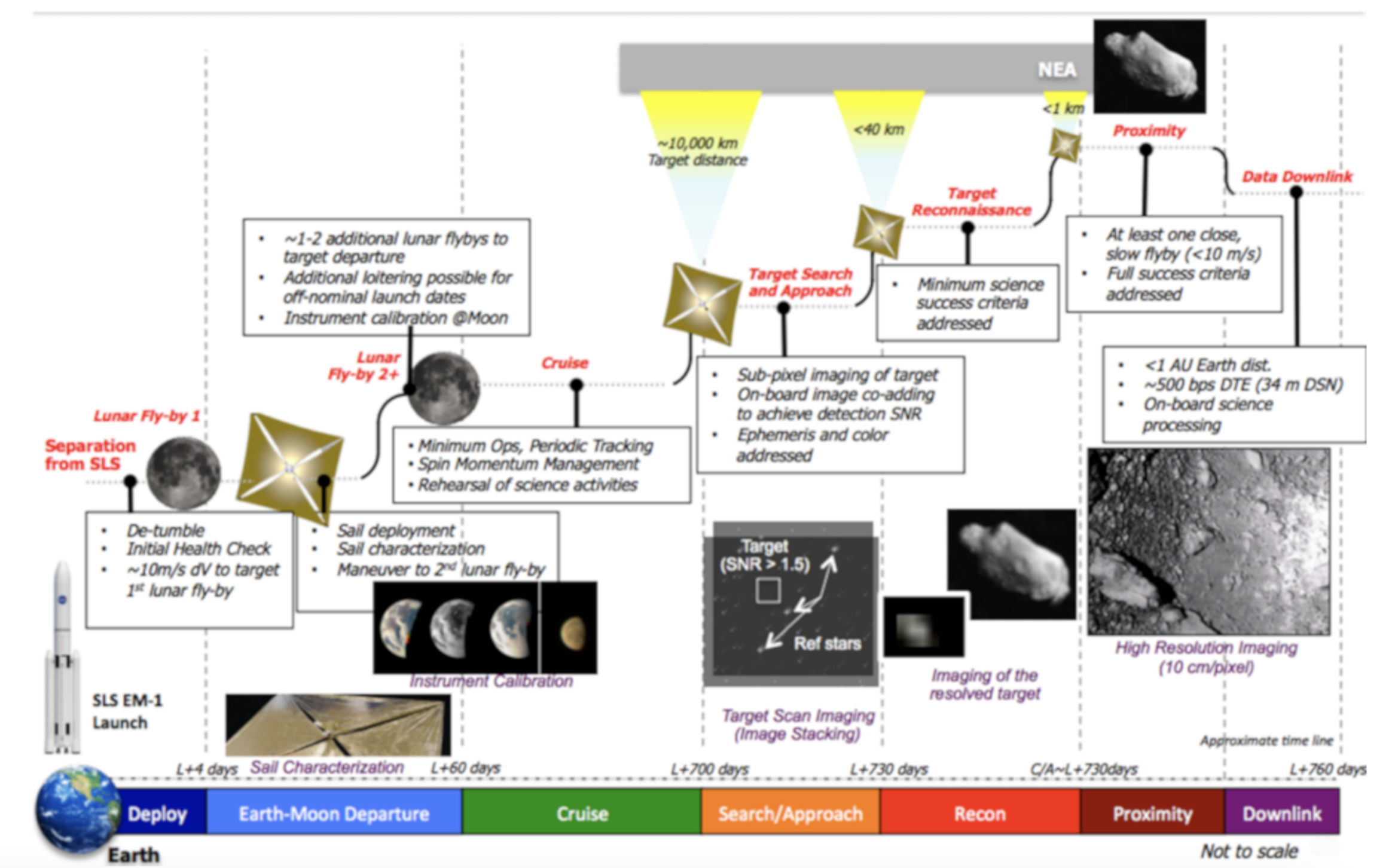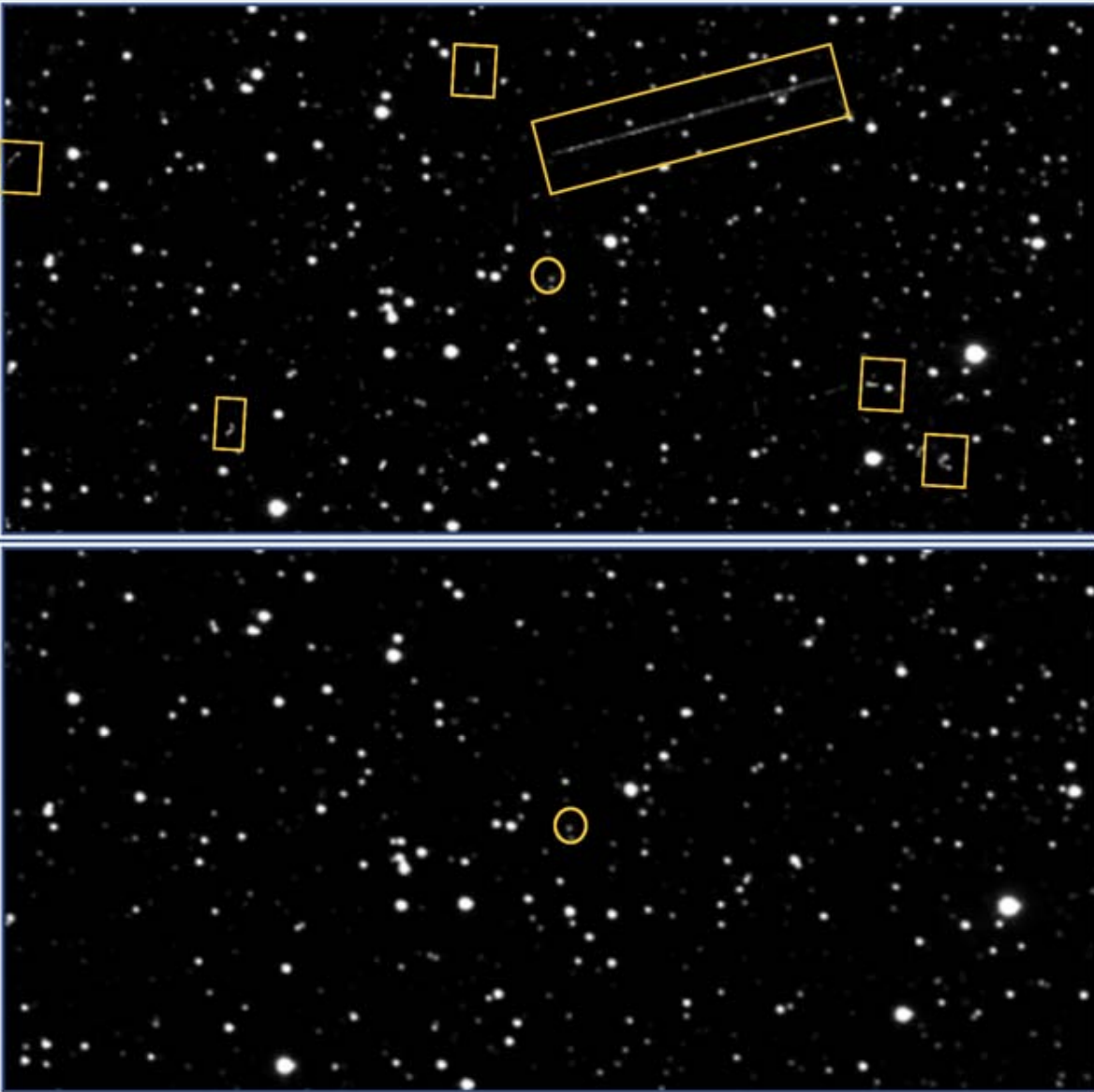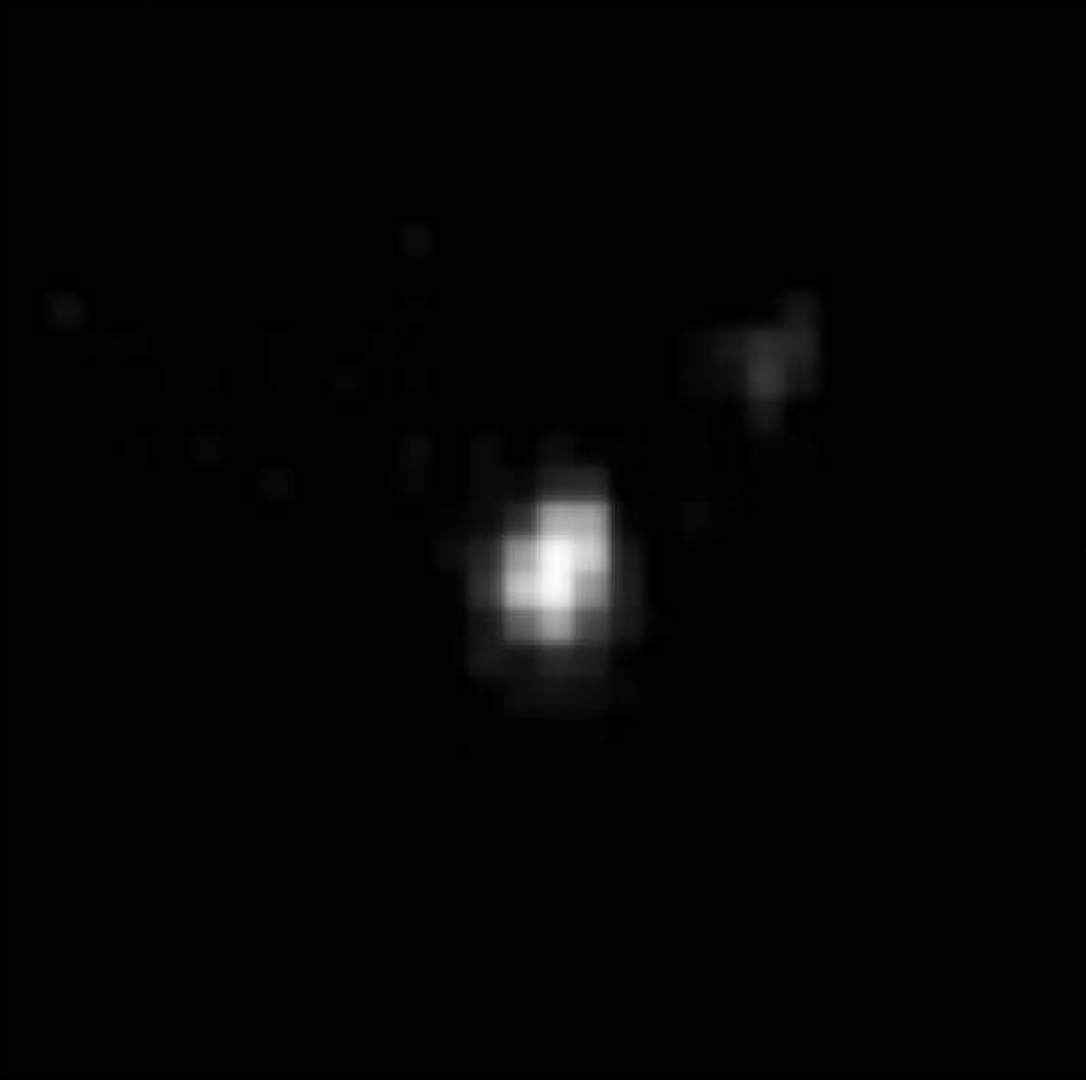Near Earth Asteroid Scout (NEA Scout) Science Autonomy
Principal Investigator
Jack LightholderEmail: jack.a.lightholder@jpl.nasa.gov
Small spacecraft are continually evolving in capability and mission complexity. As spacecraft size decreases, physical limitations present new challenges for mission designers. These include limited instrument aperture, low communications bandwidth, and reduced attitude control. Software techniques can address these limitations to retain the capabilities of larger spacecraft, in a small form factor. These techniques move the first order science analysis, which is traditionally completed on the ground, onboard the spacecraft. This can minimize the amount of data volume required for first order decision making. We present a collection of techniques designed for mitigating limited pointing stability for target acquisition, onboard image calibration and decision making, in a low bandwidth environment. These technologies will fly on the Near Earth Asteroid Scout (NEA Scout) interplanetary CubeSat mission in 2019. To support verification and validation, the flight software implementations of these algorithms have been run on New Horizons, Rosetta and terrestrially acquired data sets. These experiments validate the capability to detect the target, through noise and target location uncertainty.
As part of the Space Launch System (SLS) Exploration Mission 1 (EM-1) mission, the Near-Earth Asteroid Scout (NEA Scout) CubeSat mission will fly to about 1 AU from Earth to conduct a flyby of a near Earth asteroid (NEA) less than 100 m across. A 6U CubeSat, NEA Scout will be guided by a solar sail, towards its target asteroid 1991VG. Due to its small size and low albedo, complete characterization of 1991 VG from Earth is difficult. A combination of target orbit uncertainty and long lead times for solar sail trajectory correction maneuvers drive a requirement to identify the target in optical navigation imagery at a distance of about 60,000 km. At closest approach, the same imager will be used for near field imaging of the target. Figure 1 summarizes the NEA Scout concept of operations.

Traditional large spacecraft accomplish these imaging objectives using long exposures to increase SNR and identify the low albedo target. Due to the pointing drift and jitter inherent in a small platform, long exposure imaging is less feasible for NEA Scout. Onboard image processing overcomes this challenge. The spacecraft aligns and combines a stack of rapidly acquired images, resulting in a single image with a higher SNR than its constituent images. We filter the aligned images using a temporal median. This solution fits within the memory constrained onboard context. Prior to alignment, each image undergoes a first order image calibration, onboard, to improve the results of the alignment. This calibration consists of a dark current subtraction, flat field adjustment and bad pixel mask application. The temporal median has the added benefit of removing transient imaging artifacts, such as cosmic rays. Interplanetary CubeSats, such as NEA Scout, are additionally physically constrained by the size of their antenna and available transmission power, which is a major challenge for science-driven CubeSast missions and the basis for the work presented in this paper.

At closest target approach, NEA Scout will be constrained to approximately <1 kbps downlink bandwidth. We address this limitation with automatic image cropping algorithms and software routines which downlink image statistics, giving operators a better understanding of the image content before committing it to the downlink queue. Alternatively, operators can command specific cropping operations, or as a window around the brightest point in the image. The combination of these techniques enables early target detection in an onboard context, without stringent pointing requirements, in a low bandwidth mission scenario. These capabilities leverage onboard data processing to distill decision making data to tenable size for low bandwidth deep space communication paradigms. The demonstration of this novel science software on an actual science-driven mission will pave the way for future smallsat missions to distant destinations.

Software techniques can supplement spacecraft hardware limitations to achieve comparable science objectives in small spacecraft, as in large. These limitations include reduced pointing precision and limited bandwidth volume. Technologies such as onboard image calibration and analysis metric reporting eliminate the need to downlink raw images for immediate calibration. Moving this well characterized analysis onboard the spacecraft makes these calibrated data products available for subsequent onboard analysis. The ability to detect shift between images, along with temporal median filtering allows stacks of rapidly acquired images to be combined into a single high SNR image, emulating long exposure optimal navigation images, on a lower precision pointing platform. Onboard alignment of images for spatially aligned pixel-wise subtraction enables background star removal, increasing the chances of onboard target detection. Dynamic cropping around the target, after background star removal, allows for target location quantification and imaging using small amounts of bandwidth. Decreases in bandwidth support interplanetary smallsats, where communications passes are small and infrequent.
Increasing the paradigm of onboard data analysis enables new mission profiles which are not possible with traditional methods for analyzing science return. Distilling science data return enables increased focused of attention by human operations, reducing turnaround time for critical decision making. Missions like NEA Scout, where target characterization at launch might be limited, require in flight characterization of the target and subsequent operations agility to respond to the changing operational requirements. Onboard data analysis allows for increased target observation data, earlier in cruise, giving the operations team valuable extra time to perform course corrections for the navigation system.
Increased insights, focused data, optimized bandwidth and early target detection enable missions like NEA Scout on bandwidth limited and pointing constrained platforms. Utilizing softwaresolutions to enable new mission platforms increases exploration potential, allowing smallsats to increase science return and expand beyond low Earth orbit.
Please visit our public GitHub repository for more information.
Select Publications
 Lightholder, Jack, et al. “Near Earth Asteroid Scout CubeSat science data retrieval optimization using onboard data analysis.” 2019 IEEE Aerospace Conference. IEEE, 2019.
Lightholder, Jack, et al. “Near Earth Asteroid Scout CubeSat science data retrieval optimization using onboard data analysis.” 2019 IEEE Aerospace Conference. IEEE, 2019.
 Lightholder, Jack, et al. “Benchmarking Onboard Science Data Retrieval Algorithms on the Snapdragon Platform.” 2023 IEEE Aerospace Conference. IEEE, 2023.
Lightholder, Jack, et al. “Benchmarking Onboard Science Data Retrieval Algorithms on the Snapdragon Platform.” 2023 IEEE Aerospace Conference. IEEE, 2023.
 Lockett, Tiffany Russell, et al. “Near-earth asteroid scout flight mission.” IEEE Aerospace and Electronic Systems Magazine 35.3 (2020): 20-29.
Lockett, Tiffany Russell, et al. “Near-earth asteroid scout flight mission.” IEEE Aerospace and Electronic Systems Magazine 35.3 (2020): 20-29.
